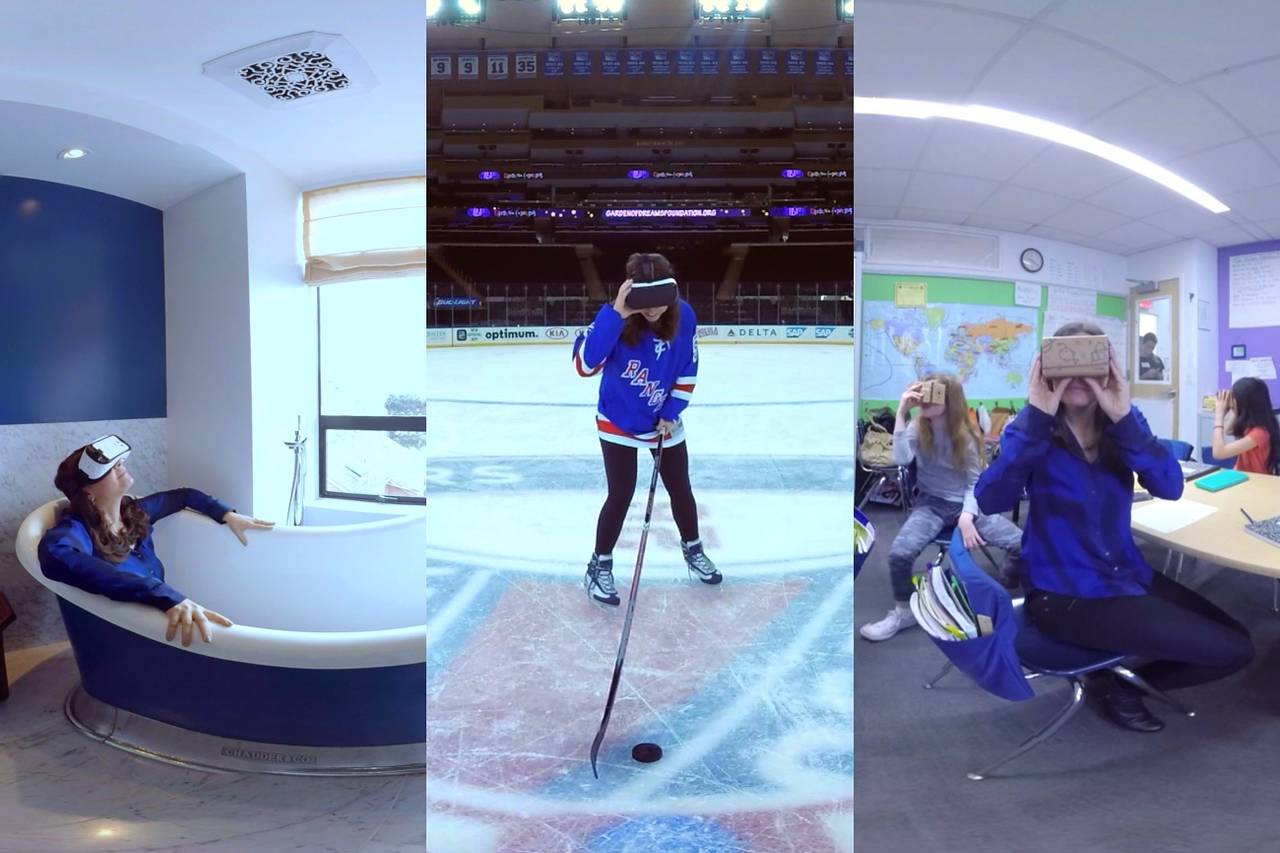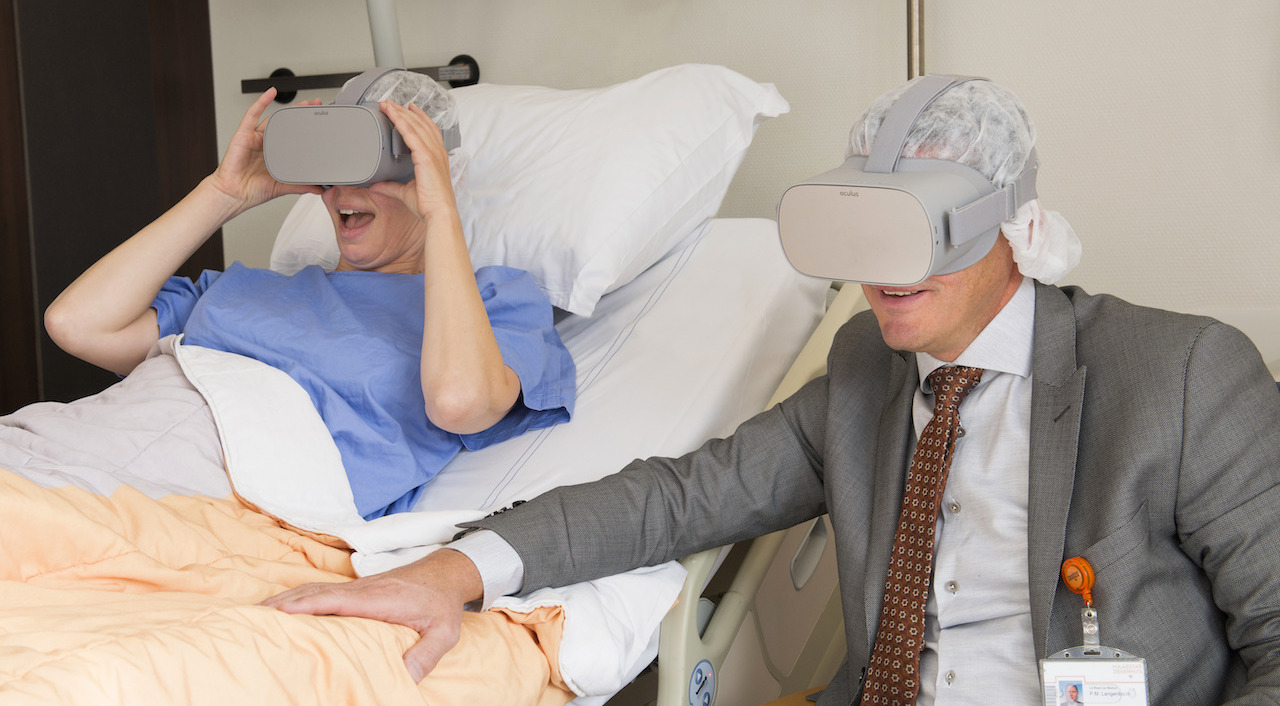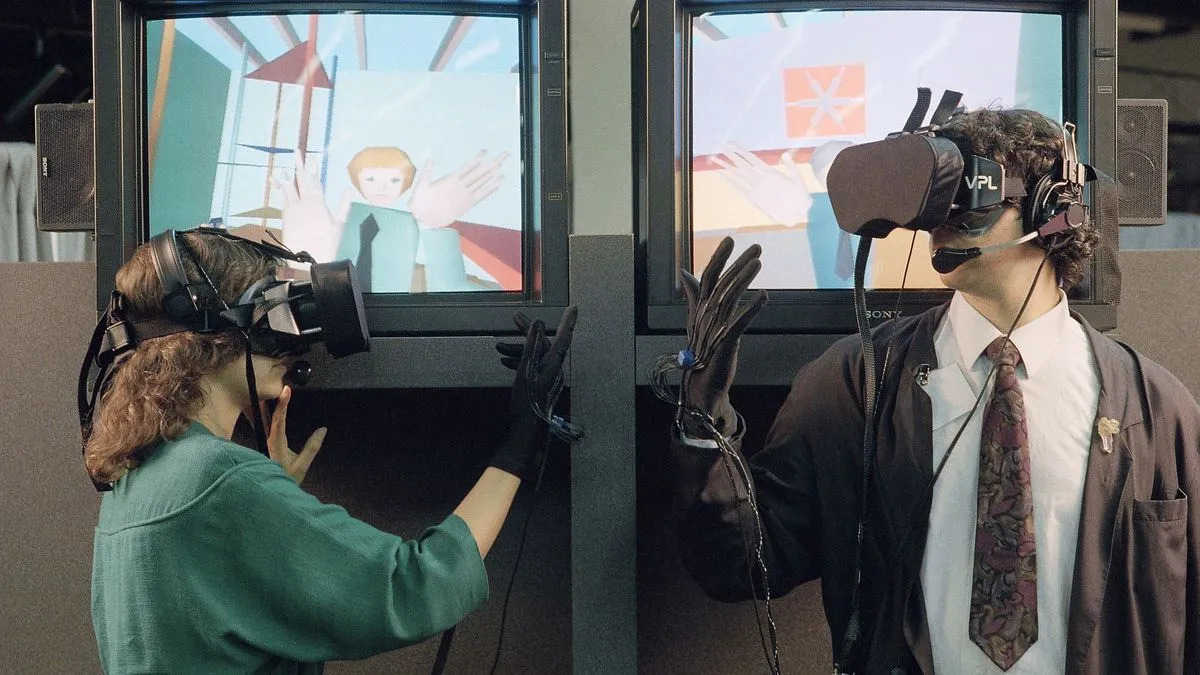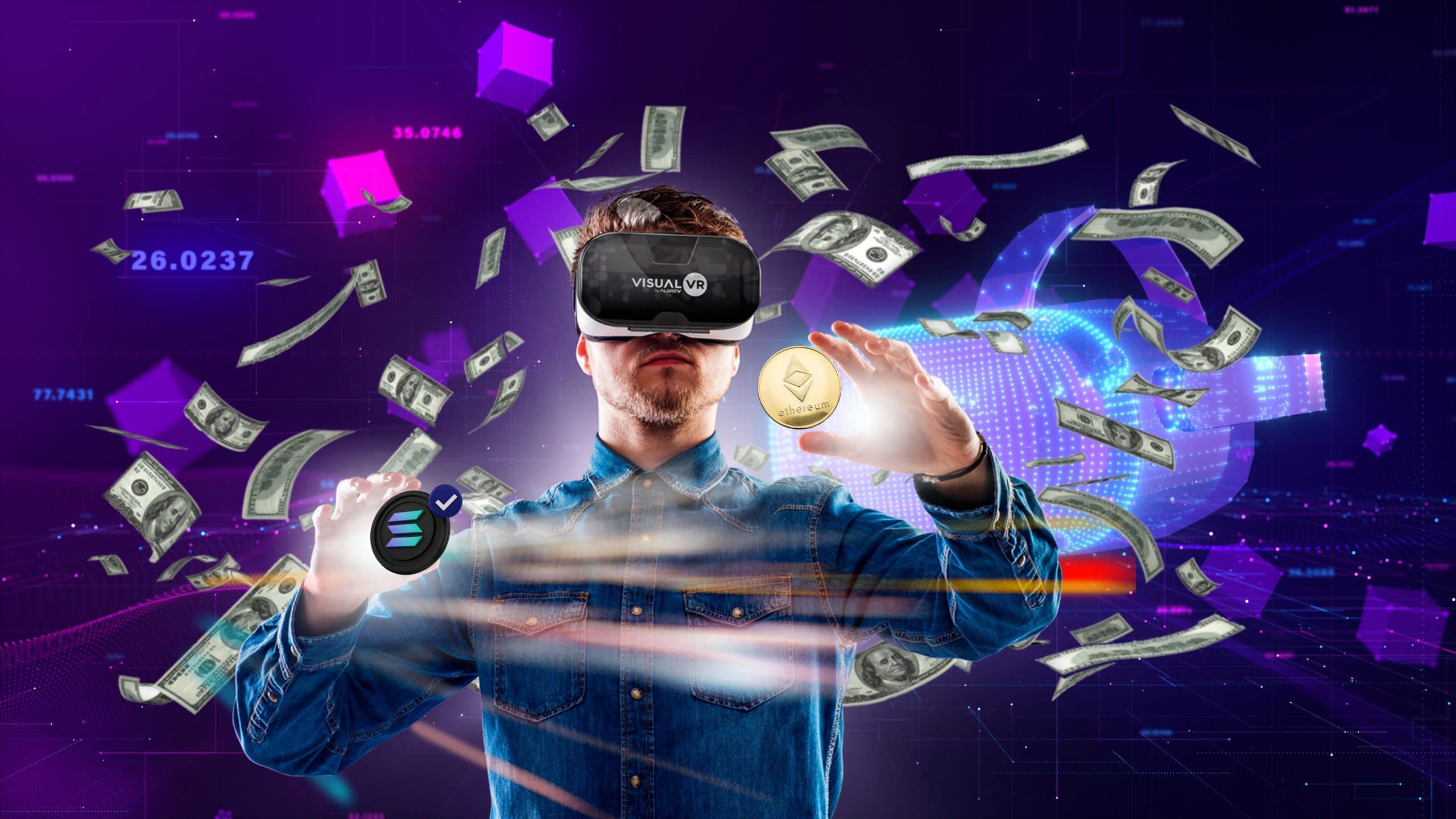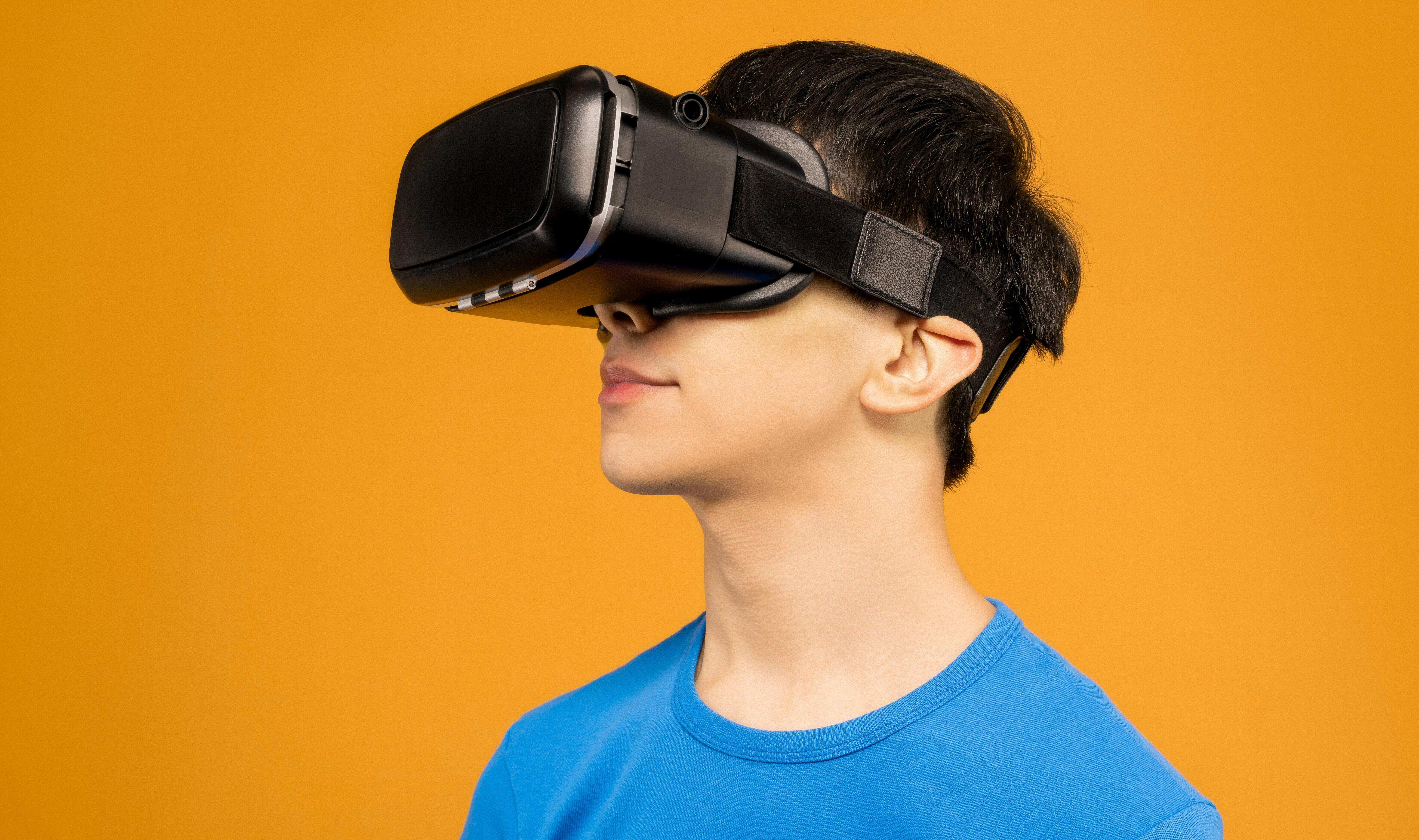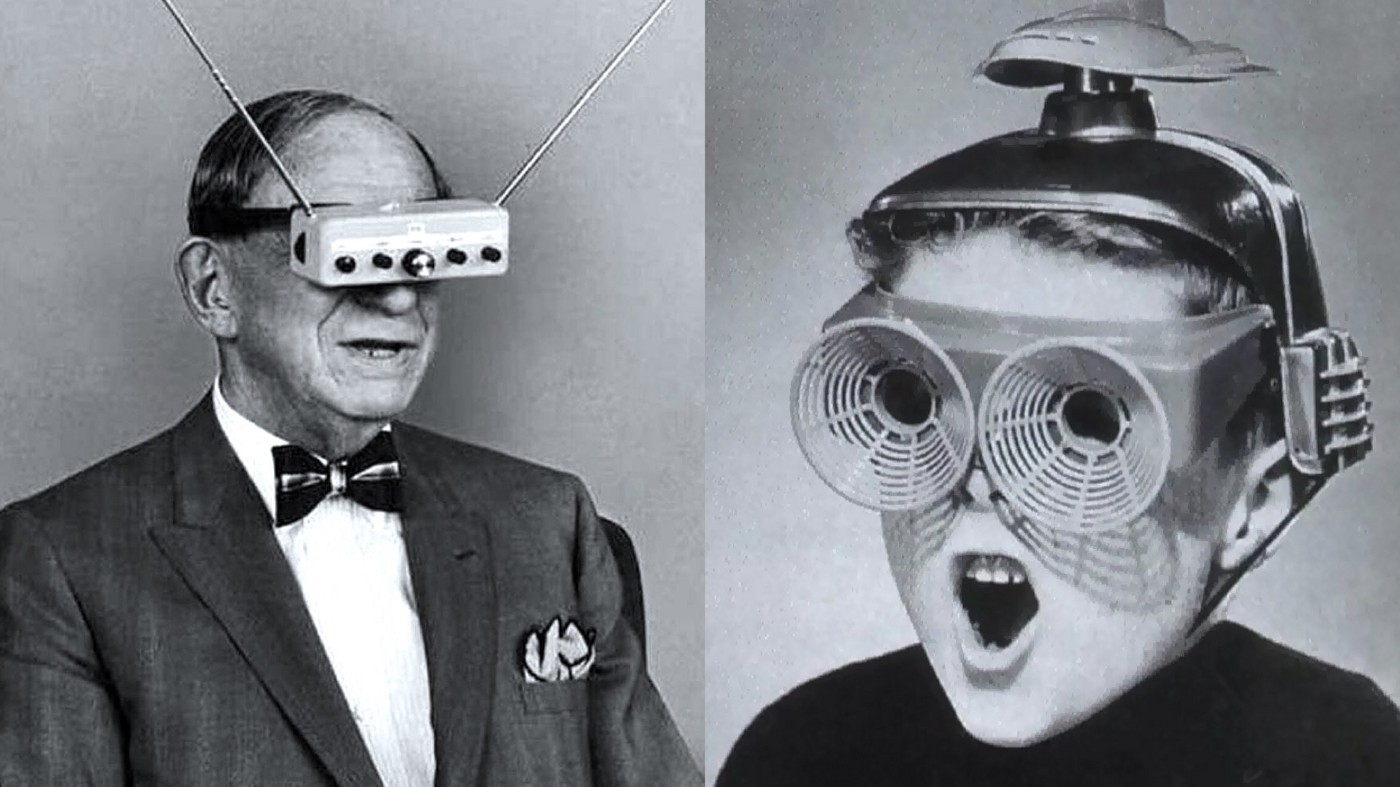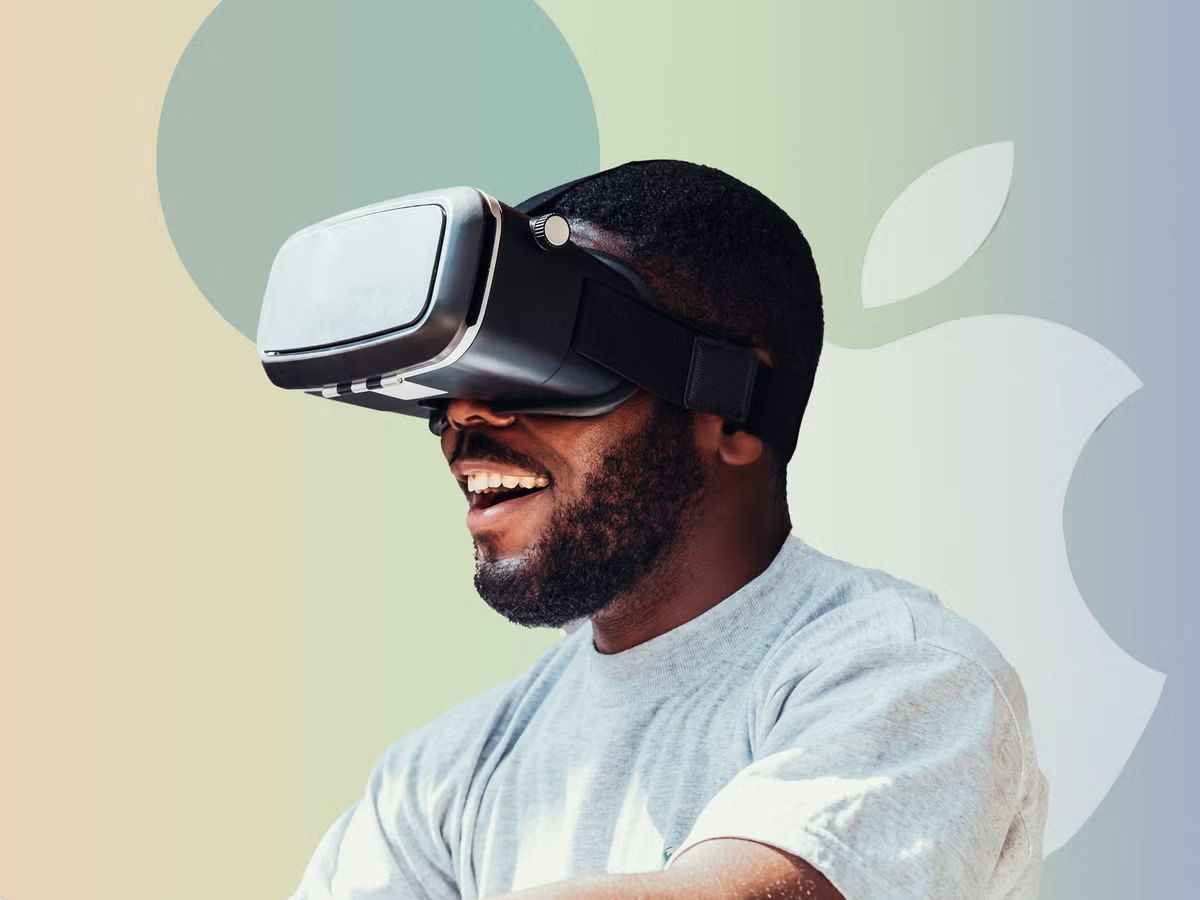Introduction
Virtual reality (VR) has revolutionized a wide range of industries, immersing users in simulated environments and providing a unique and interactive experience. The technology has come a long way, opening up endless possibilities for various fields. Whether it’s entertainment, education, healthcare, architecture, or even social interactions, virtual reality has left an indelible mark.
With the advancements in technology and the affordability of VR devices, more and more people are embracing this exciting medium. From gaming enthusiasts to professionals seeking innovative solutions, the applications of virtual reality continue to expand.
In this article, we will explore the diverse applications of virtual reality and uncover the incredible possibilities it offers in different sectors. From revolutionizing gaming experiences to transforming education, healthcare, architecture, and even social interactions, virtual reality is reshaping our world.
Let’s dive into the immersive world of virtual reality and discover the remarkable ways it is being utilized.
Virtual Reality in Gaming
Virtual reality has completely transformed the gaming industry, offering players a truly immersive experience that goes beyond traditional gaming. With VR headsets and motion-tracking controllers, gamers can now step into virtual worlds and interact with their surroundings in ways never seen before.
One of the most significant advantages of virtual reality in gaming is the sense of presence it provides. Players can feel like they are inside the game, exploring vast landscapes, engaging in intense battles, and experiencing adrenaline-pumping adventures. The level of immersion adds a new layer of excitement and realism to the gaming experience.
VR gaming also offers a new level of interactivity. With the ability to physically move and manipulate objects in the virtual space, players can engage in a more tactile and intuitive way. This opens up possibilities for unique gameplay mechanics that require the player to physically dodge obstacles, aim with precision, or solve puzzles using their hands.
Furthermore, virtual reality enables multiplayer experiences that bridge the gap between distance and physical presence. Gamers from different parts of the world can come together in virtual realms, communicate in real-time, and collaborate or compete in shared gaming adventures. This communal aspect enhances social interactions and fosters a sense of community within the gaming community.
Virtual reality has also made strides in enhancing the horror and suspense genres. With the ability to create a truly terrifying atmosphere, VR horror games offer an unparalleled level of immersion. Players find themselves fully immersed in a spooky environment, with jump scares and eerie sounds coming from every direction. The heightened level of immersion in horror games can evoke intense emotions and a thrilling sense of fear.
As VR technology continues to evolve, game developers are pushing the boundaries of what is possible in gaming. The future of virtual reality gaming holds tremendous potential for more realistic graphics, interactive storytelling, innovative gameplay mechanics, and endless possibilities for game design.
Virtual Reality in Education
Virtual reality is revolutionizing the way we learn and engage with educational content. By creating immersive and interactive experiences, virtual reality has the power to transport students beyond the confines of traditional classrooms and textbooks.
One of the primary benefits of using virtual reality in education is its ability to bring abstract concepts to life. Through VR simulations, students can explore complex topics in a hands-on manner, making learning more engaging and interactive. For example, physics students can visualize and interact with the laws of motion in a virtual laboratory, while biology students can explore the intricacies of human anatomy in a simulated environment.
Virtual reality also offers opportunities for virtual field trips, eliminating geographical barriers and allowing students to virtually visit historical landmarks, famous museums, and even distant planets. This immersive experience enhances students’ understanding of different cultures, places, and historical events, making learning more memorable and impactful.
Moreover, virtual reality can cater to different learning styles and abilities. For visual learners, VR provides a visually stimulating environment where concepts can be easily understood through graphical representations. For kinesthetic learners, interactive VR experiences enable them to actively participate and apply their knowledge in a virtual setting.
When it comes to skill-based training, virtual reality can be a game-changer. Students can practice and develop their skills in a risk-free environment, whether it is surgical procedures, architectural design, or engineering simulations. Virtual reality allows for repetitive practice and instant feedback, helping students refine their skills and build confidence.
The integration of virtual reality also promotes collaborative learning. Students can work together in a virtual space, solving problems, brainstorming ideas, and collaborating on projects. This fosters teamwork, communication, and critical thinking skills, essential for success in the modern world.
While virtual reality in education is still in its early stages, the vast potential it holds for transforming the educational landscape is undeniable. As the technology becomes more accessible and affordable, we can anticipate a future where virtual reality is integrated into mainstream education, helping students excel and inspiring a lifelong love for learning.
Virtual Reality in Healthcare
Virtual reality has emerged as a powerful tool in the healthcare industry, revolutionizing patient care, medical training, and therapeutic interventions. With its immersive and interactive capabilities, VR is transforming the way healthcare professionals deliver medical services and improve patient outcomes.
One of the key applications of virtual reality in healthcare is in pain management and distraction therapy. VR experiences can be used to distract patients from pain and discomfort during medical procedures or post-surgery recovery. By transporting patients to calming and engaging virtual environments, VR helps alleviate anxiety and reduce the need for medication, providing a non-invasive and drug-free alternative for pain relief.
In addition, virtual reality is enhancing medical and surgical training. Medical students and practitioners can benefit from realistic simulations that allow them to practice complex procedures in a safe and controlled environment. VR-based simulations provide a hands-on experience, enabling healthcare professionals to develop their skills, improve decision-making, and enhance patient safety.
Furthermore, virtual reality has found significant applications in mental health and therapy. VR simulations can recreate triggering or anxiety-inducing environments, providing a controlled and safe space for individuals to address their fears and anxieties. This exposure therapy can be particularly beneficial in treating phobias, post-traumatic stress disorder (PTSD), and anxiety disorders, offering a tailored and immersive therapeutic experience.
Virtual reality also has the potential to improve the quality of life for patients with physical disabilities or mobility limitations. Through VR rehabilitation programs, individuals can engage in virtual exercises and activities that aid in physical therapy, muscle retraining, and motor skill development. VR-based rehabilitation provides a motivating and immersive experience, accelerating recovery and improving overall rehabilitation outcomes.
Moreover, virtual reality is being used to enhance patient education and empower individuals to take an active role in managing their health. Patients can visualize their conditions, explore treatment options, and gain a better understanding of their healthcare journey using interactive VR-based educational materials.
As technology continues to advance, virtual reality holds immense potential in transforming healthcare delivery. From pain management to training, therapy, and patient education, the integration of VR is ushering in a new era of patient-centric care and transforming the healthcare landscape.
Virtual Reality in Architecture and Design
Virtual reality has become an invaluable tool in the field of architecture and design, revolutionizing the way projects are envisioned, presented, and experienced. With its immersive and realistic capabilities, VR is transforming the design process, facilitating collaboration, and enabling clients to visualize spaces in a more intuitive and interactive way.
One of the primary benefits of virtual reality in architecture and design is its ability to bring designs to life before construction begins. Architects can create virtual models of their designs and allow clients to virtually walk through the spaces, providing a realistic sense of scale, proportions, and aesthetics. This immersive experience helps clients make informed decisions, visualize the final outcome, and provide valuable feedback, ultimately leading to better design outcomes.
Virtual reality also offers architects and designers the ability to explore different design options and make real-time changes. Using VR tools, professionals can test various materials, lighting, and layout configurations, allowing for faster iteration and more efficient decision-making. The ability to experience designs in a virtual environment greatly enhances the spatial understanding and helps identify potential design flaws or improvements before construction begins.
Clients and stakeholders can also benefit from virtual reality in the design review process. By immersing themselves in virtual environments, they can assess the design from multiple perspectives, evaluate functionality, and gain a realistic sense of the space. This level of immersion and interaction fosters greater engagement and understanding, leading to more informed discussions and ultimately better design outcomes.
Furthermore, virtual reality is being used as a powerful communication tool in architecture and design. It allows stakeholders, including architects, clients, and construction teams, to have a common visual language, mitigating misunderstandings and ensuring the design intent is effectively conveyed. VR walkthroughs and fly-throughs enable all parties to visualize the project in a cohesive and collaborative manner, strengthening communication and reducing the risk of costly errors during construction.
As virtual reality technology continues to evolve, the architecture and design industry will continue to witness its transformative potential. From concept creation to design review and client presentations, VR is driving innovation, enhancing collaboration, and elevating the design process to new heights.
Virtual Reality in Tourism and Travel
Virtual reality is reshaping the way we explore and experience destinations, making it a game-changer in the tourism and travel industry. By providing immersive and interactive virtual experiences, VR is bridging the gap between potential travelers and destinations, opening up a world of possibilities.
One of the primary applications of virtual reality in tourism is in destination marketing and promotion. Through VR, travel agencies and tourism boards can showcase the beauty and attractions of a place in a compelling and immersive manner. Potential travelers can virtually wander through landmarks, experience local culture, and get a taste of what to expect, inspiring them to make travel plans.
Virtual reality also offers a unique opportunity for travelers to virtually explore destinations before they visit. Using VR headsets or even smartphone apps, individuals can take virtual tours of popular attractions, hotels, or cruise ships, helping them make informed decisions and build anticipation for their upcoming trips. This immersive experience allows travelers to get a realistic sense of the environment, layout, and ambiance, enhancing the pre-travel planning process.
Furthermore, virtual reality is being used for 360-degree video tours, allowing travelers to virtually experience destinations from the comfort of their homes. This is particularly helpful for individuals with limited mobility or those who may not have the means to travel physically. VR travel experiences can provide an accessible way to explore new places, learn about different cultures, and satisfy wanderlust.
In addition, virtual reality is transforming the way tourists experience attractions and activities. With VR experiences, travelers can immerse themselves in historical reenactments, go on virtual safaris, or even participate in extreme sports, all from the comfort of a VR headset. These virtual adventures enhance the travel experience, providing a unique perspective and adding an extra layer of excitement and engagement.
The travel and hospitality industry can also benefit from virtual reality in training and customer service. Hotel staff can be trained using VR simulations, allowing them to familiarize themselves with different scenarios and provide exceptional service. Additionally, VR can help concierge services offer virtual assistance to guests, answering their questions, providing recommendations, and enhancing the overall customer experience.
As virtual reality technology continues to advance, the tourism and travel industry is embracing its transformative potential. Virtual reality is revolutionizing destination marketing, enhancing pre-travel experiences, and reimagining the way we explore and enjoy the world.
Virtual Reality in Training and Simulation
Virtual reality has emerged as a powerful tool for training and simulation across various industries, providing realistic and immersive experiences that enhance learning and skill development. From military training to employee onboarding, virtual reality is revolutionizing the way we train and prepare for real-world scenarios.
One of the primary advantages of virtual reality in training is the ability to create lifelike simulations in a safe and controlled environment. Whether it’s piloting an aircraft, performing complex surgeries, or responding to emergency situations, VR allows trainees to practice and refine their skills without the risk associated with real-world training.
Virtual reality also offers the benefit of repetitive practice and instant feedback. Trainees can repeat tasks and scenarios as many times as needed, allowing for a deep level of skill development and muscle memory enhancement. VR-based training programs can provide real-time feedback, highlighting areas for improvement and facilitating continuous learning and growth.
Moreover, virtual reality enables collaborative and remote training experiences. Trainees can come together in a shared virtual environment, interact with fellow participants, and practice team-based skills and communication. This is particularly valuable for organizations with geographically dispersed teams, as VR eliminates the need for physical proximity during training exercises.
Virtual reality in training extends beyond technical skills to include soft skills development as well. Through simulated scenarios and interactive role-playing, trainees can enhance their communication, leadership, and decision-making abilities. VR training allows individuals to experience realistic scenarios, challenging them to think on their feet and make informed choices in a controlled environment.
Virtual reality is also being utilized in specialized training, such as hazardous environments, high-risk jobs, and critical decision-making situations. From firefighters practicing firefighting techniques to astronauts preparing for space missions, VR provides a level of realism that cannot be matched by traditional training methods. It allows trainees to experience and learn from challenging situations without exposing them to actual physical or psychological risks.
The future of virtual reality in training and simulation holds tremendous potential. As technology advances, we can expect more realistic graphics, haptic feedback integration, and AI-driven virtual characters that enhance the training experience even further. Virtual reality is transforming the way we acquire and refine skills, making training more effective, engaging, and impactful in a wide range of industries.
Virtual Reality in Social Interactions
Virtual reality is transforming the way we connect and interact with others, fostering new opportunities for social interactions in immersive virtual environments. From virtual meeting spaces to shared virtual worlds, VR is redefining social experiences and bridging the gap between physical distance and social presence.
One of the key advantages of virtual reality in social interactions is the sense of presence it provides. VR allows individuals to feel as if they are physically present in the same virtual space, enabling more meaningful and engaging social interactions. Users can see and hear others in real time, creating a sense of social presence that closely mimics face-to-face interactions.
Virtual reality also offers the freedom to create avatars and customize virtual identities, opening up opportunities for self-expression and creativity. Users can choose their appearances, customize their environments, and express their personalities in ways that may not be possible in the physical world. This level of personalization enhances the social experience and allows individuals to explore different aspects of their identity.
Moreover, virtual reality provides a platform for socializing and connecting with people from all around the world. Virtual communities and social VR platforms enable users to join shared virtual spaces, engage in conversations, and participate in activities together. Whether it’s attending virtual concerts, playing multiplayer games, or simply chatting with friends in a virtual cafe, VR facilitates social interactions that transcend physical boundaries.
Virtual reality also offers a level of accessibility and inclusivity for individuals with physical disabilities or limitations. By entering virtual worlds, individuals can participate in social activities and events without the barriers they might face in the physical world. VR allows users to interact, communicate, and engage in virtual social experiences on an equal playing field.
Virtual reality is also being used to rekindle and strengthen connections. Through VR, individuals can meet up with friends and family members who are physically distant, allowing them to virtually gather and spend time together. This is particularly valuable during times when travel is not possible or when loved ones are spread across different locations.
As virtual reality technology continues to advance, we can anticipate even more immersive and social experiences. The future of VR in social interactions holds the potential for realistic body tracking, facial expressions, and haptic feedback, creating more authentic and emotionally connected social experiences.
Virtual reality is reshaping the way we connect and interact with others, providing a new dimension of social experiences that transcend physical limitations. Whether it’s socializing, collaborating, or simply sharing experiences, VR is redefining how we engage with one another in a digitally connected world.
Virtual Reality in Therapies and Rehabilitation
Virtual reality is revolutionizing therapies and rehabilitation, offering innovative and effective methods for addressing physical, mental, and emotional health conditions. By creating immersive and interactive virtual environments, VR is transforming the way we approach rehabilitation and therapeutic interventions.
One of the major applications of virtual reality in therapies is in pain management and distraction therapy. VR experiences can help alleviate pain by diverting patients’ attention away from their discomfort. Through immersive environments and interactive experiences, individuals can engage in virtual activities that promote relaxation, reduce anxiety, and provide a welcome distraction from their pain.
Additionally, virtual reality is being used in the rehabilitation of individuals with physical disabilities. Through VR simulations and exercises, patients can practice movements, balance, and coordination in a safe and controlled environment. Virtual reality serves as a powerful tool for motor skill retraining, helping individuals regain their independence, improve their mobility, and enhance their quality of life.
Mental health therapies also benefit from virtual reality interventions. VR-based exposure therapy is used to treat phobias, post-traumatic stress disorder (PTSD), and other anxiety disorders. By recreating triggering situations in a virtual environment, individuals can face their fears in a safe and controlled manner, gradually desensitizing themselves and reducing their anxiety responses.
Virtual reality is also proving to be an effective tool for cognitive rehabilitation. Individuals with cognitive impairments, such as traumatic brain injuries or neurodegenerative disorders, can engage in interactive cognitive exercises in a virtual environment. These exercises help improve attention, memory, problem-solving, and executive functioning skills, assisting individuals in their cognitive recovery and daily life activities.
Furthermore, virtual reality is being used for therapeutic purposes in a variety of settings. From virtual reality relaxation experiences to mindfulness-based VR interventions, individuals can immerse themselves in calming and stress-reducing environments. This helps promote relaxation, improve mental well-being, and reduce symptoms of anxiety and depression.
As virtual reality technology advances, the potential for therapeutic applications continues to expand. The integration of haptic feedback, biofeedback, and AI-driven interventions holds promise for tailoring VR experiences to individual needs and maximizing therapeutic outcomes.
Virtual reality is transforming therapies and rehabilitation, providing immersive, engaging, and effective interventions across a wide range of conditions. Whether it’s physical rehabilitation, mental health treatments, or cognitive interventions, VR is playing a transformative role in improving the lives of individuals undergoing therapy and rehabilitation.
Conclusion
Virtual reality technology has revolutionized various industries, offering immersive and interactive experiences that transcend traditional boundaries. From gaming and education to healthcare, architecture, tourism, training, social interactions, and therapies, virtual reality has made a significant impact, transforming the way we engage, learn, and experience the world around us.
In gaming, virtual reality has taken gameplay to a whole new level, providing a sense of presence and interactivity that enhances the gaming experience. VR has also found its place in education, bringing abstract concepts to life, enabling virtual field trips, and enhancing skill development across disciplines.
The healthcare industry has embraced virtual reality for pain management, medical training, therapy, and rehabilitation. By creating immersive and safe environments, VR enhances patient care, improves skill acquisition, and facilitates therapeutic interventions.
Virtual reality is also revolutionizing the fields of architecture and design, allowing for immersive presentations, collaboration, and realistic visualizations. In the tourism and travel industry, VR is reshaping destination marketing, facilitating virtual exploration, and offering accessible travel experiences to individuals who may not have the means to travel physically.
Training and simulation have greatly benefited from virtual reality, providing realistic and risk-free environments for skills development, team building, and critical decision-making. Additionally, VR is transforming social interactions, creating shared virtual spaces for communication, collaboration, and meaningful connections.
Last but not least, virtual reality is making a significant impact on therapies and rehabilitation, from pain management and distraction therapy to cognitive interventions and mental health treatments. VR is providing innovative and effective methods to improve well-being and enhance recovery.
In conclusion, virtual reality offers endless possibilities and continues to shape the future of various industries. As technology advances, we can expect even more realistic, immersive, and empowering virtual experiences. The potential for virtual reality to transform how we learn, work, play, and connect is truly boundless, and its impact will continue to unfold as the technology evolves.







